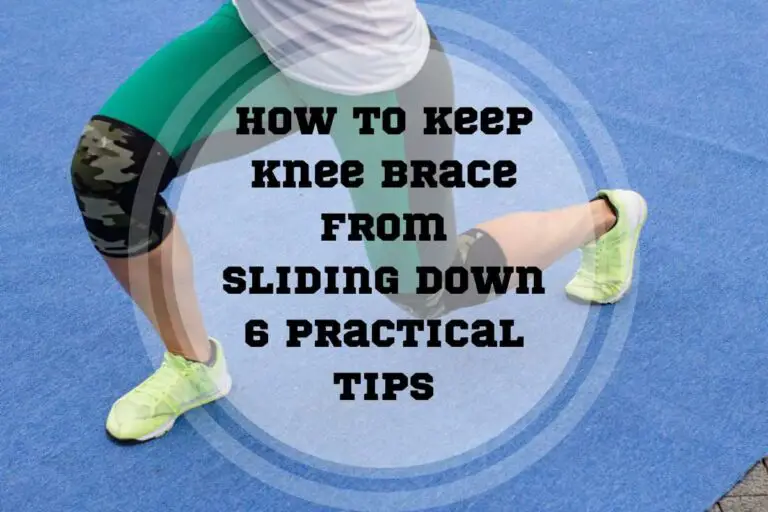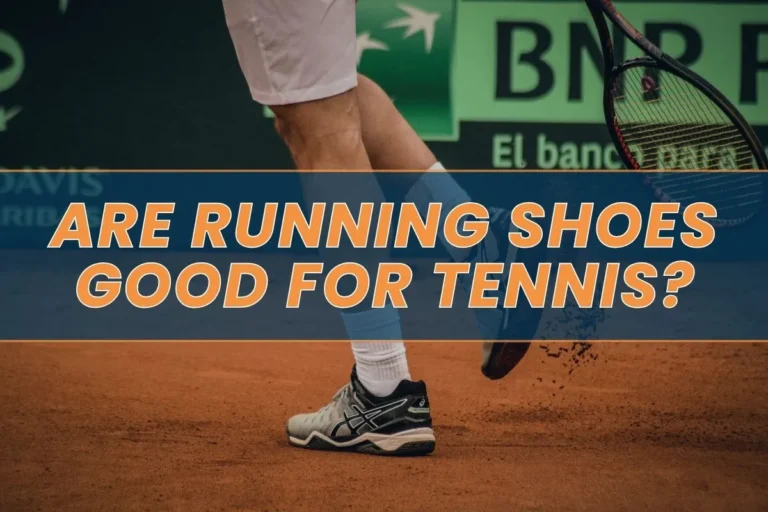Why Do My Ankles Hurt When I Run? 5 Most Common Causes
If you’re a runner dealing with this problem, you must be thinking, why do my ankles hurt when I run? Whether you’re a long-time runner or just starting, you should know that ankle pain during and after a run is a prevalent issue.
Even though muscle pain in the hips, legs, and lower back is not an uncommon problem, ankle pain is often the most debilitating. So, take your ankles seriously to avoid a long-term injury.
On the other hand, as a runner, what can you do? That’s precisely what we’re going to discuss here. Let’s dive in!
Why do I have pain in my ankles when I run?
You may be dealing with a muscle imbalance, improper running shoes, or overuse. Also, your ankle soreness after running may be a sign of stress fracture, sprains, Tarsal Tunnel Syndrome, or Achilles Tendinopathy.
Why Ankles Hurt During Running Or After Running
Ankle pain from running can occur due to numerous reasons. Starting from the most basic ones, such as overuse or overtraining, up to ankle sprains, strains, and fractures. Also, here comes into consideration many inflammations, like the ones of a tendon and the bursa.

Before discussing the causes of ankle pain and the common injuries, we should be informed of the anatomy of the runner’s ankle.
Anatomy Of The Runners Ankle
The ankle constitutes the junction of the foot and lower leg. Healthcare providers sometimes refer to it as a talocrural or tibiotalar joint. Like all joints, this ankle is part of our skeletal system and contains cartilage, muscles, ligaments, and nerves.
The ankle joint is a hinged synovial joint formed by articulating the tibia, talus, and fibula bones. The three borders together form the runner’s ankle. The inferior and distal aspect of the tibia, known as the plafond, is connected to the fibula via tibiofibular ligaments. The talocrural or runner’s ankle bends and flexes every time you move to maintain your balance and keep you stable. Also, it moves in two directions:
- Plantar flexion – down and away from your body
- Dorsal flexion – up and toward your body
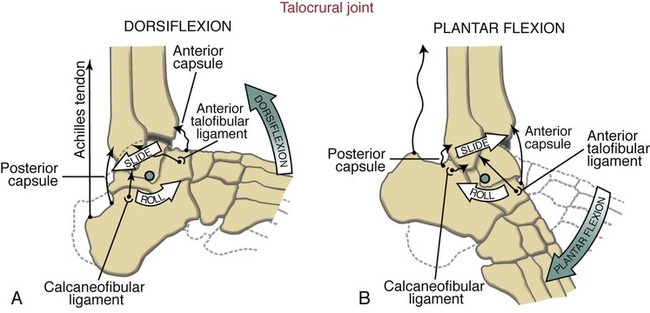
Knowing the anatomy of the runner’s ankle, it’s time to focus on the bigger question. Why does my ankle hurt from running?
5 Causes Of Ankle Pain While Running Or After Running?
There are many answers to why you may have ankle soreness after running. Not only after, but ankle pain can occur during or before a run. Let’s discuss the general causes of it.
1. Running Shoes
Wearing improper or worn-out running shoes can easily lead to lateral ankle pain after running. On the other hand, how often should you change your running shoes? The advice says it is approximately 500 miles.
Even though many factors have a role here, such as weight and running surface, let’s calculate the average. If you run 5 miles a day, three times a week, you need to get a new pair of running shoes every 7-8 months on average.
2. Bone Problems
Ankle pain can be related to bone issues such as bone spurs, fractures, or stress fractures. Also, excessive bone growth or stiffness can be another possible cause of why your ankles hurt after running. The foot must be flexible to move smoothly during the different running phases, so anything that interferes may lead to a swollen ankle after running.
3. Muscle Imbalance
The balance of the ankle depends on the muscles surrounding it. If there is an imbalance in flexibility or in muscle strength, it can lead to pain or ankle injuries from running.
4. Overuse
Overuse is a common cause of ankle pain, especially for those who engage in repetitive activities like running. Continuously straining the ankle without the needed rest can lead to potential injuries, like sprains, and possible conditions, like tendinitis.

5. Previous Injuries
If you already have a history of ankle injuries, such as sprains and fractures, they can make the ankle more susceptible to pain and discomfort while running. When dealing with this issue, it’s essentially to implement strengthening exercises to prevent long-term problems with your ankle.

Pro Tip:
Staying hydrated and consuming a vitamin-rich diet can help you maintain overall joint health and reduce inflammation.
6 Common ankle injuries during and after running
When trying to figure out why my ankle hurts after running, you must be informed of the common ankle injuries from running. They can happen for various reasons, such as tripping or falling, landing wrongly after a jump, or running on uneven surfaces. Let’s discuss them!
Subscribe to Our Running Newsletter!
Get free running tips from renowned professional athletes and discounts from top-notch brands.
1. Peroneal Tendonitis
Peroneal tendonitis is an inflammation of the peroneal tendons placed on the ankle’s outer side. The peroneal tendons are crucial in stabilizing the ankle and helping overall foot movement.
You may deal with outer ankle pain after running when the tendons become irritated or inflamed. This may happen due to biomechanical issues, overuse, or improper footwear.
Common symptoms of peroneal tendonitis include pain on the outer side of the ankle, difficulty moving the ankle, or instability and weakness in the ankle. Also, you may experience swelling, tenderness, or aching sensations.
Treatment for peroneal tendonitis may include anti-inflammatory medications, physical therapy, rest, compression, or elevation. It’s always advisable to consult a healthcare professional.
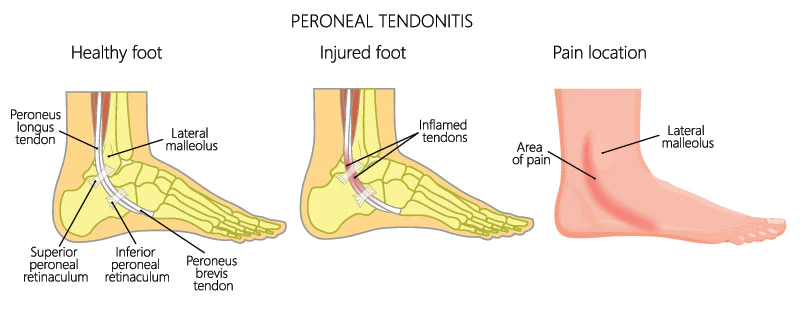
2. Posterior Tibial Tendonitis
If you have inner ankle pain after running, you may deal with posterior tibial tendonitis. The posterior tibial tendon runs along the inner side of the ankle and plays an essential role in maintaining proper foot and ankle alignment and supporting the foot arch. Its primary function is to stabilize the runner’s ankle.
This condition damages the posterior tibial tendon, resulting in degeneration or inflammation.
The symptoms of posterior tibial tendonitis are mostly localized pain along the inner side of your ankle and foot. If your ankles hurt after running, that may also be a symptom of posterior tibial tendonitis. You may also experience difficulty with walking, especially on uneven surfaces.
The treatment for this condition often involves rest, ice, compression, physical therapy or many more.
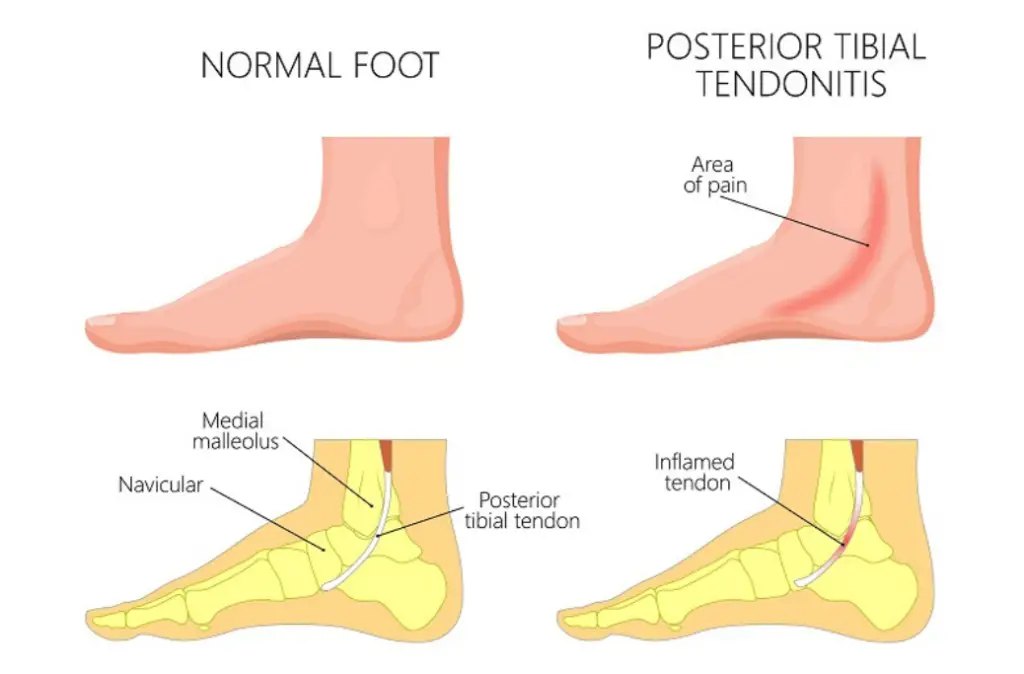
3. Ankle Sprain
A sprained ankle from running is a common injury. While ligaments are strong, they are not the most flexible, so they get damaged if we over-stretch them. It’s easy to step awkwardly or twist your foot while running on uneven surfaces, so most runners experience an ankle sprain at some point.

Symptoms for this common injury may be sudden pain at the time of injury and swelling. The treatment for sprains generally involves RICE protocol:
- Rest
- Ice
- Compression
- Elevation

Pro Tip:
Remember that keeping a healthy body weight will help you reduce the stress on your ankles and decrease the chances of experiencing ankle pain.
4. Anterior Tibialis Tendonitis
Anterior tibialis tendonitis is an injury of the anterior tibialis tendon in the front of the ankle, which connects with the foot. The tendon is crucial in pulling the foot up, turning the foot inward, and lifting the foot off the ground.
So, if you’re experiencing front ankle pain when running, tenderness, or swelling over the front of the ankle, you may be dealing with this condition. Anterior tibialis tendonitis is treated with minor pain relievers and anti-inflammatory medicines.
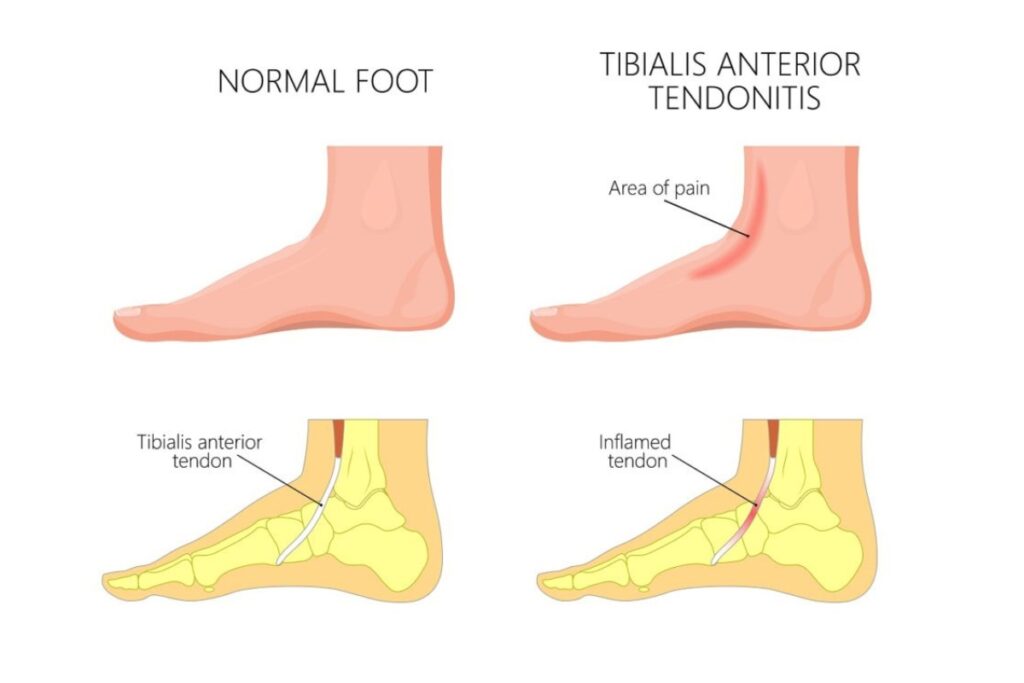
5. Achilles Tendinopathy
This injury happens due to overuse and excessive chronic stress upon the tendon. The Achilles tendon is the thickest and strongest tendon in our body. It connects your calf muscle to the bone in your heel, helping your foot to run, walk or jump. A stiff Achilles tendon or lack of flexibility can increase the risk of this injury.
Achilles tendinopathy has many symptoms, including stiffness in your tendon, swelling at the back of your ankle, or tenderness when you touch your tendon. You can treat this injury by getting enough rest, applying ice to the affected area, or getting physical therapy.
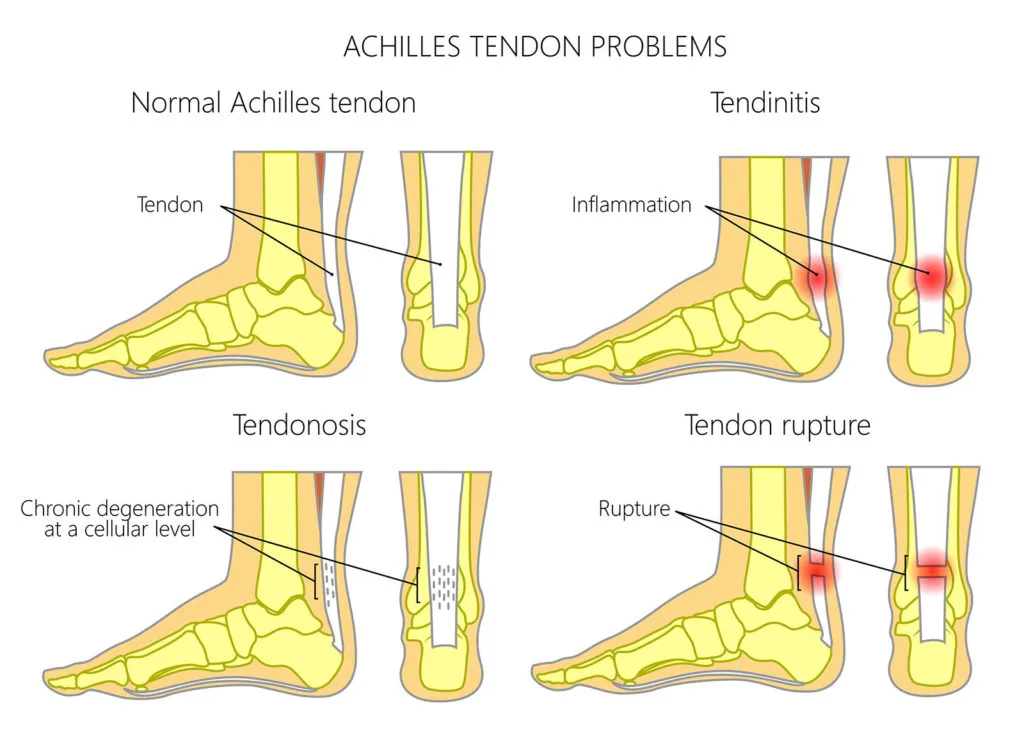
6. Tarsal Tunnel Syndrome
You may have Tarsal Tunnel syndrome if your ankles hurt after running. The source of this syndrome is the tarsal tunnel – a narrow space on the inside of the ankle right next to the ankle bones. One of the tarsal tunnel structures is the posterior tibial nerve, which is the focus of tarsal tunnel syndrome.
Tarsal tunnel syndrome is squeezing or compression on the posterior tibial nerve that produces symptoms along the path of the nerve from the inside of the ankle up to the foot. This syndrome is caused by anything that squeezes the posterior tibial nerve, such as:
- Systemic diseases such as arthritis or diabetes
- Other injuries, such as ankle sprain
The symptoms of this syndrome are tingling or burning sensations, pain in the ankle, and numbness. The treatment may include rest and activity modification, ice application, non-steroidal anti-inflammation drugs, or physical therapy.

How to effectively treat ankle pain after running
After discussing the most common ankle injuries, it’s time to answer the obvious question. How to reduce ankle pain while running? The first step may be just to reduce the stress on your body and give yourself the much-needed time to heal. In other words, take a break from your consistent running routine.
The RICE treatment method is widely known and designed to relieve pain, speed healing, and reduce swelling. Let’s go over the steps:
- Rest – prioritize your rest and avoid putting any weight on the ankle for 48 to 72 hours.
- Ice – for the first 48 hours, ice your ankle as much as possible. To the icing for 15 to 20 minutes, approximately four to eight times daily.
- Compress – wrap up your ankle with a bandage or use a compression sleeve designed for ankles.
- Elevate – try to keep the ankle raised above your heart.
Other than this method, you may try taking an oral medication – nonsteroidal anti-inflammatory drugs such as ibuprofen.
4 Prevention of diseases and pain in the ankle during or after running
Let’s talk about preventing the pain in the ankle or any potential injuries. You need to know these things because you can significantly decrease the risk by taking the proper precautions.
1. Warm Up
Always stretch lightly before your run or do a slow jog for two to three minutes to warm up the muscles. Don’t force the stretch, and keep it slow.
2. Choose Athletic Shoes For Your Type
People with low arches should get shoes that provide enough support in both the front of the shoe and under the arch. And those with a higher arch and stiffer foot should choose shoes with more cushion and a softer platform.
3. Avoid Running On Uneven Surfaces
Be careful on rocky terrains with loose gravel. If you’re trail running, holes, roots, and tree stumps can be problematic.
4. Use Proper Technique
Your running technique is crucial in avoiding ankle injuries. Pay attention to your form, and ensure you’re using the correct movements.
5 Ways to prevent ankle hurt while or after running
Ankle pain can be prevented if you take some precautions in mind. Let’s discuss them!
1. Avoid Overuse
Overuse of your muscles often leads to ankle pain. Make sure you’re getting enough rest and leaving space for muscle recovery.
2. See A Physical Therapist
Engaging a physiotherapist can help prevent ankle injuries during or after running by assessing and improving your running mechanics, offering guidance on appropriate footwear, and providing tailored exercises to enhance ankle stability. With their expertise, you can proactively address potential issues, ensuring a safer and injury-free running experience.
3. Exercise Ankle Stability
To avoid ankle injuries, include exercises that target ankle stability and strength in your regular fitness routine. That can be balancing activities exercises, resistance band exercises, or calf raises.
4. Recovery And Maintenance
The post-care run is essential in preventing injury. Perform static stretches after your run to reduce muscle tension and improve flexibility. Also, consider foam rolling to release muscle knots.
5. Listen To Your Body
If you start feeling ankle pain during a run, stop immediately and carefully assess the pain. Describe to yourself what it is that you’re feeling. If it’s a persistent pain, consider contacting a healthcare professional. And if you notice swelling, make sure you apply the RICE protocol.
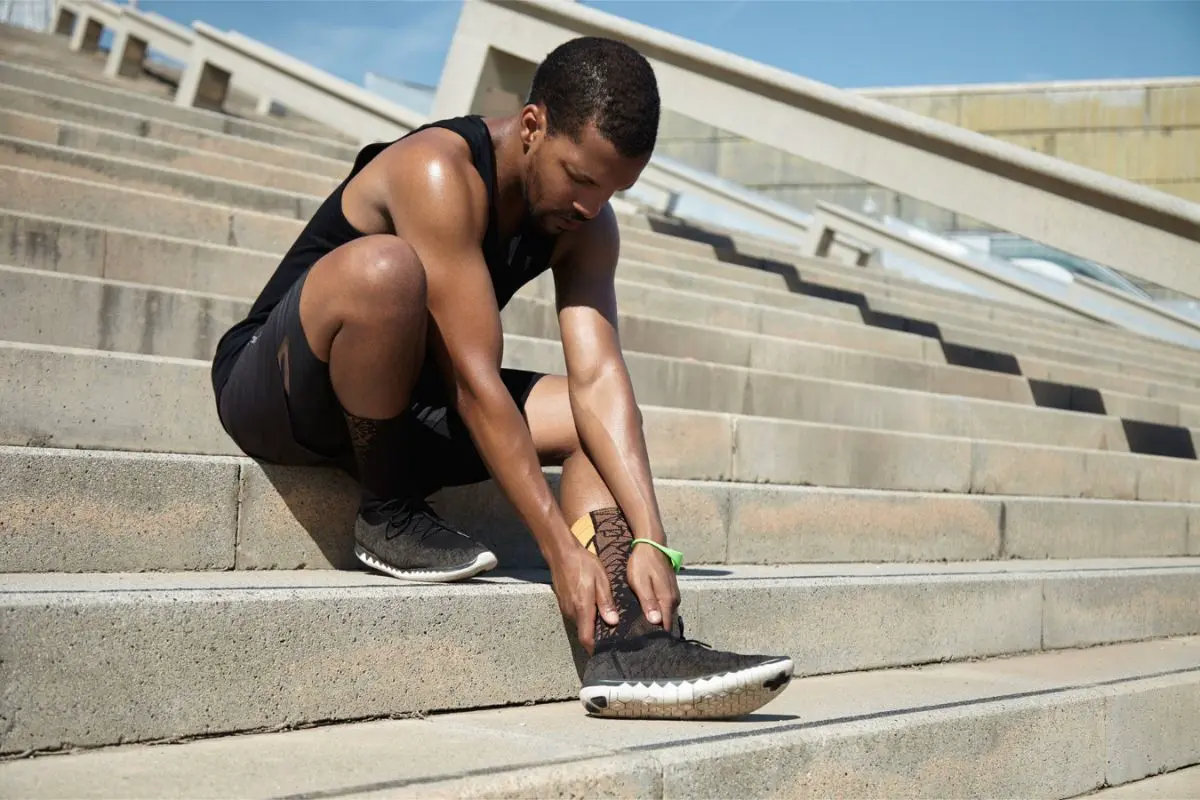
Frequently Asked Questions About Why My Ankles Hurt When I Run
Is It OK To Run Through Ankle Pain?
It’s not OK to run through ankle pain. If you’re feeling pain throughout your run, stop and assess the hurt.
Why Does My Ankle Hurt When I Run But Not When I Walk?
Sprains and strains are usually the most common reason your ankle hurts when running. Running involves a different mechanical pattern than walking. Also, running subjects your ankles to more impact compared to walking.
Summing It Up!
An ankle pain is a common thing experienced by many runners. It may be caused by many things, from footwear and overuse up to ankle sprains or peroneal tendonitis. It’s important to take precautions and be aware of your running habits. Do you have ankle pain when running? How do you deal with it? Share it in the comments!
Also Read:
- Is Walking 6 Miles a Day Good
- How To Prevent Cramps While Running
- Why Do My Lungs Burn When I Run
- Runners Toenails Falling Off
- How Many Minutes Is 7 Miles Running
- How Many Steps in 3 Miles
- Running 20 Minutes a Day
- Best Belly Band for Running
- Best Running Spikes for Winter
References:
- Conor O’Brien, Rob Byrden, “Tarsal Tunnel Syndrome—A New Way to Diagnose an Old Blog archives. (n.d.). CMC COMPENDIUM. https://www.cmcedmasters.com/ortho-blog/archives/10-2017
- Problem”, “Scientific Research”, “https://www.scirp.org/
- Ulfin Rethnam and Nilesh Makwana, “Are old running shoes detrimental to your feet? A pedobarographic study”, “National Library Of Medicine”, published August 24, 2011, https://www.ncbi.nlm.nih.gov/
- J F Baumhauer 1, D M Alosa, A F Renström, S Trevino, B Beynnon, “A prospective study of ankle injury risk factors”,”National Library Of Medicine” https://pubmed.ncbi.nlm.nih.gov/
- Paul W. Knapp; Dustin Constant, “Posterior Tibial Tendon Dysfunction”, “National Library Of Medicine”, last update: May 23, 2023, https://www.ncbi.nlm.nih.gov/
- J Man Manip Ther., “Evidence-based treatment for ankle injuries: a clinical perspective”, “National Library Of Medicine”, March 18 2010, “https://www.ncbi.nlm.nih.gov/”
If you have any questions or suggestions, you can contact us via email – [email protected]


